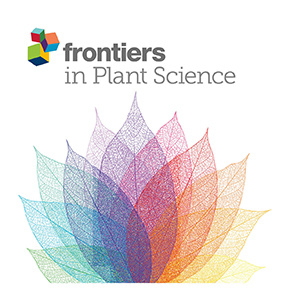
“Access to cannabis and cannabinoid products is increasing worldwide for recreational and medicinal use. Two primary compounds within cannabis plant matter, Δ9-tetrahydrocannabinol (THC) and cannabidiol (CBD), are both psychoactive, but only THC is considered intoxicating. There is significant interest in potential therapeutic properties of these cannabinoids and of CBD in particular.
Some research has suggested that CBD may ameliorate adverse effects of THC, but this may be dose dependent as other evidence suggests possible potentiating effects of THC by low doses of CBD. We conducted a randomised placebo controlled trial to examine the acute effects of these compounds alone and in combination when administered by vaporisation to frequent and infrequent cannabis users.
Participants (n = 36; 31 male) completed 5 drug conditions spaced one week apart, with the following planned contrasts: placebo vs CBD alone (400 mg); THC alone (8 mg) vs THC combined with low (4 mg) or high (400 mg) doses of CBD. Objective (blind observer ratings) and subjective (self-rated) measures of intoxication were the primary outcomes, with additional indices of intoxication examined.
CBD showed some intoxicating properties relative to placebo.
Low doses of CBD when combined with THC enhanced, while high doses of CBD reduced the intoxicating effects of THC.
The enhancement of intoxication by low-dose CBD was particularly prominent in infrequent cannabis users and was consistent across objective and subjective measures. Most effects were significant at p < .0001.
These findings are important to consider in terms of recommended proportions of THC and CBD in cannabis plant matter whether used medicinally or recreationally and have implications for novice or less experienced cannabis users.”
https://www.ncbi.nlm.nih.gov/pubmed/30661105
https://link.springer.com/article/10.1007%2Fs00406-019-00978-2




 “Major depressive disorder is a devastating psychiatric disease that afflicts up to 17% of the world’s population. Postmortem brain analyses and imaging studies of patients with depression have implicated basal lateral amygdala (BLA) dysfunction in the pathophysiology of depression. However, the circuit and molecular mechanisms through which BLA neurons modulate depressive behavior are largely uncharacterized. Here, in mice, we identified that BLA cholecystokinin (CCK) glutamatergic neurons mediated negative reinforcement via D2 medium spiny neurons (MSNs) in the nucleus accumbens (NAc) and that chronic social defeat selectively potentiated excitatory transmission of the CCKBLA-D2NAc circuit in susceptible mice via reduction of presynaptic cannabinoid type-1 receptor (CB1R). Knockdown of CB1R in the CCKBLA-D2NAc circuit elevated synaptic activity and promoted stress susceptibility. Notably, selective inhibition of the CCKBLA-D2NAc circuit or administration of synthetic cannabinoids in the NAc was sufficient to produce antidepressant-like effects. Overall, our studies reveal the circuit and molecular mechanisms of depression.”
“Major depressive disorder is a devastating psychiatric disease that afflicts up to 17% of the world’s population. Postmortem brain analyses and imaging studies of patients with depression have implicated basal lateral amygdala (BLA) dysfunction in the pathophysiology of depression. However, the circuit and molecular mechanisms through which BLA neurons modulate depressive behavior are largely uncharacterized. Here, in mice, we identified that BLA cholecystokinin (CCK) glutamatergic neurons mediated negative reinforcement via D2 medium spiny neurons (MSNs) in the nucleus accumbens (NAc) and that chronic social defeat selectively potentiated excitatory transmission of the CCKBLA-D2NAc circuit in susceptible mice via reduction of presynaptic cannabinoid type-1 receptor (CB1R). Knockdown of CB1R in the CCKBLA-D2NAc circuit elevated synaptic activity and promoted stress susceptibility. Notably, selective inhibition of the CCKBLA-D2NAc circuit or administration of synthetic cannabinoids in the NAc was sufficient to produce antidepressant-like effects. Overall, our studies reveal the circuit and molecular mechanisms of depression.”
 “The present review will provide an overview of the neurobiology, epidemiology, clinical impact, and treatment of cannabis use disorder (CUD) in mood disorders.
“The present review will provide an overview of the neurobiology, epidemiology, clinical impact, and treatment of cannabis use disorder (CUD) in mood disorders. “∆9 –Tetrahydrocannabinol (∆9-THC) and cannabidiol (CBD), major psychoactive constituents of marijuana, induce potentiation of pentobarbital-induced sleep in mice.
“∆9 –Tetrahydrocannabinol (∆9-THC) and cannabidiol (CBD), major psychoactive constituents of marijuana, induce potentiation of pentobarbital-induced sleep in mice.